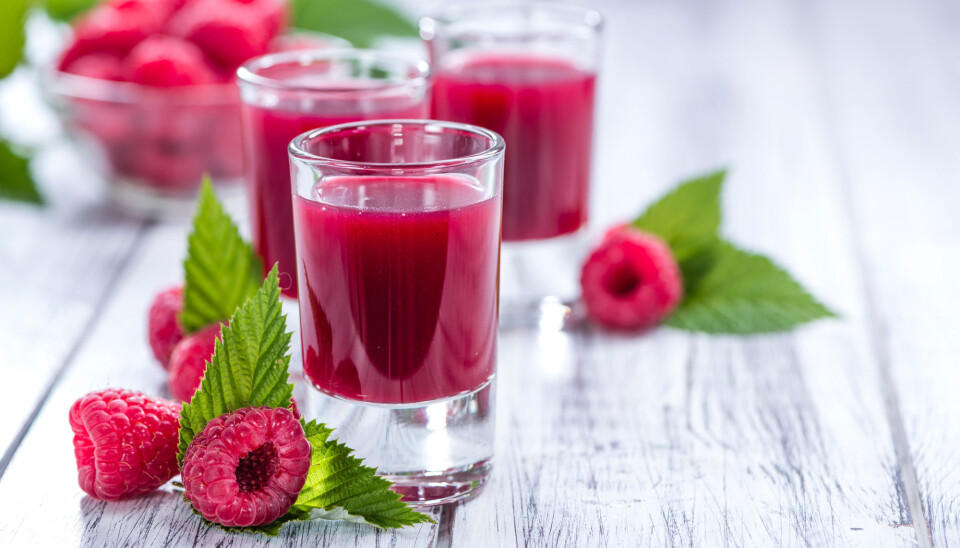This article was produced and financed by Nofima The Norwegian Institute of Food, Fisheries and Aquaculture Research - read more

Raspberry shots can give older people a better diet
Food researchers have examined the food and drink preferences of active seniors to see what they prefer. This could contribute to a healthier diet leading to a healthier old age.
The results from the examination may have an impact on food and drinks given to elderly in the future.
The researchers see that it is a good idea to include seniors when developing products that have been adapted to suit this group.
But this involves two challenges that it is important to be aware of: Elderly participants respond with extra positivity when surveyed, because many older people feel lonely and appreciate interviewers calling. Consequently, they may have a positive answer to products they don’t necessarily like.
And secondly, our sense of taste and other sensory senses such as sense of smell, hearing and eyesight become impaired as the years go by. Our ability to chew is reduced and there is an increase in the feeling of dryness in the mouth. This also affects our experience of taste.
Sense of taste remains
"Research conducted on elderly people with an impaired state of general health shows that they generally have a poorer sense of taste, but not many studies have been conducted on how the sensory perception of healthy elderly people living at home is affected. We wanted to take a closer look at this," says Paula Varela-Tomasco, a senior researcher at Nofima.
Nofima's professional sensory panel of judges and 38 healthy, active elderly people were served the same varieties of raspberry shots. There were eight different varieties, with or without whey protein, fibre and varying amounts of berries. After the tests, the researchers compared the results. The raspberry shots were "model products" that were developed during the project, and they are not available on the market today.
The professional tasting panel consisted of ten judges trained to both distinguish very slight differences in taste and to describe objectively, in detail and precisely the sensory properties of the products they were testing. Would the senior participants recognise the same flavours as the tasting panel?

As expected, the professional judges went into far more detail in their descriptions. Nevertheless, the results were, in general lines, relatively similar. Both the taste judges and the senior participants perceived the same varieties of shots as being dry, sweet, having a berry flavour or having an insipid taste.
"This is good news, because it suggests that the taste senses of healthy older people are better than previously thought. This knowledge is also useful in the development of food and drink products intended for the elderly,” Paula points out.
Shots as energy refills and snacks
The fact that older people often respond more effusively presents challenges in respect of participating in product development. The Nofima researchers have resolved this by using so-called holistic methods, which have not been used in consumer studies with elderly before. These are undirected methods whereby participants group products rather than rank them, and where they describe the products based on their objective characteristics.
“Our participants blind-tested eight different raspberry shots, which they described and grouped on a taste chart based on their objective sensory properties. They were then asked to describe situations where it would be natural to drink a fibre and protein-rich raspberry shot. Finally, they were asked to imagine an ideal shot, and place it on the taste chart. Most people wanted a shot that tasted fresh, fruity and sweet, but not too sweet.
In response to the question about situations in which the participants would like to drink the shot, the most popular options were "as an energy refill" and "as a snack", followed by "for breakfast" and "after a tur refill." Around ten per cent thought the shots would be suitable fit "for their evening meal."
“The results of the surveys show that older people are happy to drink shots on suitable occasions. They prefer shots with a fresh, fruity taste, and dislike shots that are bitter or give them a feeling of dryness in the mouth. We know that protein drinks often taste both bitter and dry, but that at the same time older people need products with a high protein content. This presents manufacturers with a taste challenge, because if the taste of a shot is not tempting then elderly people will not drink it,” concludes Paula.
———



































